Last updated on
Discover effective strategies to declutter toys, creating a more organized and stress-free environment for both you and your children.
Facing a mountain of toys can be overwhelming, but decluttering them doesn’t have to be a daunting task.
With the right strategies, you can have those toys sorted, organized, and out of your way in no time.
This article will guide you through a simple, efficient process to declutter toys, from sorting to storage solutions.
Whether you’re dealing with a small collection or a playroom full of toys, these steps will help you regain control over the clutter.
So, let’s dive into the details and turn that toy chaos into organized harmony.
Table of Contents
Understanding the Need to Declutter Toys
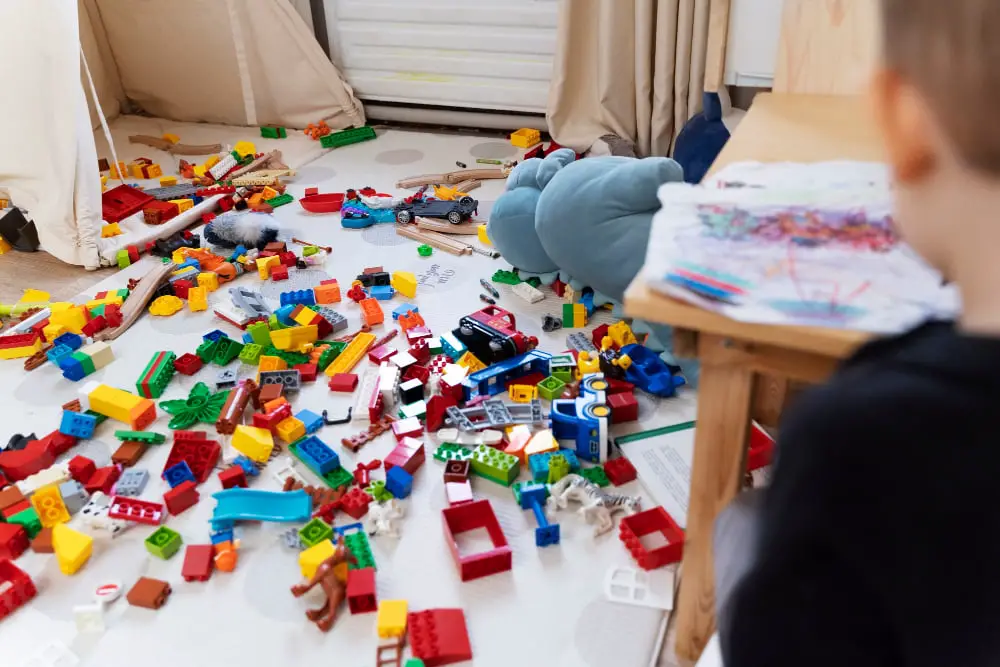
Recognizing the importance of decluttering toys is the first vital step in this journey. A surplus of toys can lead to overwhelming messes, and an overstimulation for children.
Too many options can dilute the value of individual toys, making them lose their appeal faster. Conversely, a curated selection encourages creative play and makes cleanup manageable. This process isn’t about discarding playthings ruthlessly but about fostering the appreciation of quality over quantity.
Managing toy clutter also reduces stress for parents, promotes efficiency in cleaning, and creates a more enjoyable play space.
Reflect On the Toy Collection
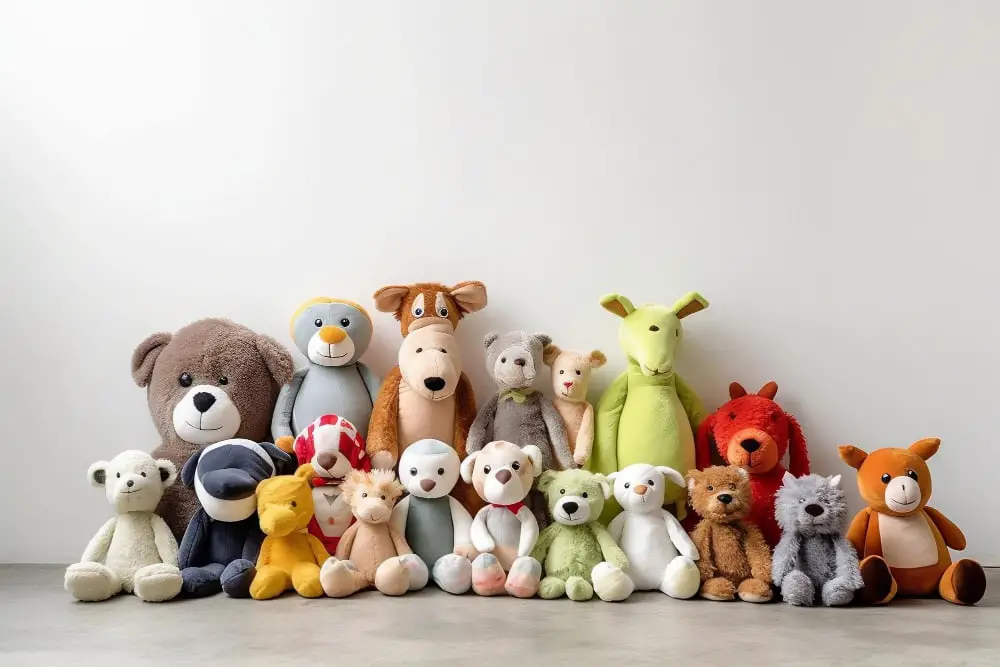
Start by assessing what is currently in the play area.
Look at the variety: puzzles, stuffed animals, building blocks, bikes, and more.
Think about which toys your child plays with regularly and which ones collect dust.
Observe how your child interacts with their belongings over a week or two to gain insight into what they truly love and use.
This observations will be crucial in the next steps of the decluttering process.
Identifying Unused and Broken Toys

Start by looking for toys that are no longer in good condition. Broken or missing pieces often make these playthings less enjoyable for children, leading to them gathering dust in some forgotten corner. These are good candidates for immediate disposal.
Next, focus on toys that haven’t been used in a while. Remember that children quickly outgrow certain games and playthings, which then become irrelevant to their interests. If your child hasn’t played with an item for several months, consider removing it from your collection. Before doing that, however, ensure it’s not a sentimental or collectible item.
This task may seem daunting but take it one step at a time. Move systematically from one category to another to make sure nothing is overlooked. You’ll be surprised at how quickly you can trim down a seemingly enormous toy collection by just identifying the unused and broken items.
Sorting and Categorizing Toys
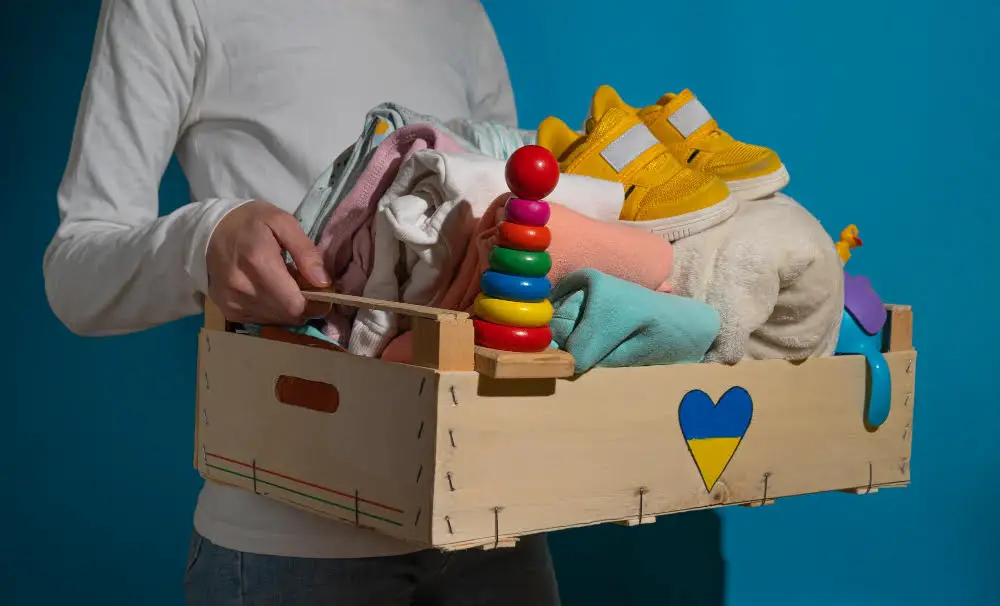
To make the task manageable, gather all the toys in one area. Categorize them by type; for example, classifying them as stuffed animals, vehicles, dolls, games, and so on. Identifying categories that make sense in your household is the goal.
Look over each toy category. Dedicate boxes or containers for each one and place the corresponding toys inside. This strategy is not only time-efficient, but allows for an easier visual perspective of how much of each type of toy your child possesses. This can also guide future decisions about what type of toys to buy or avoid.
Involving Kids in the Decluttering Process
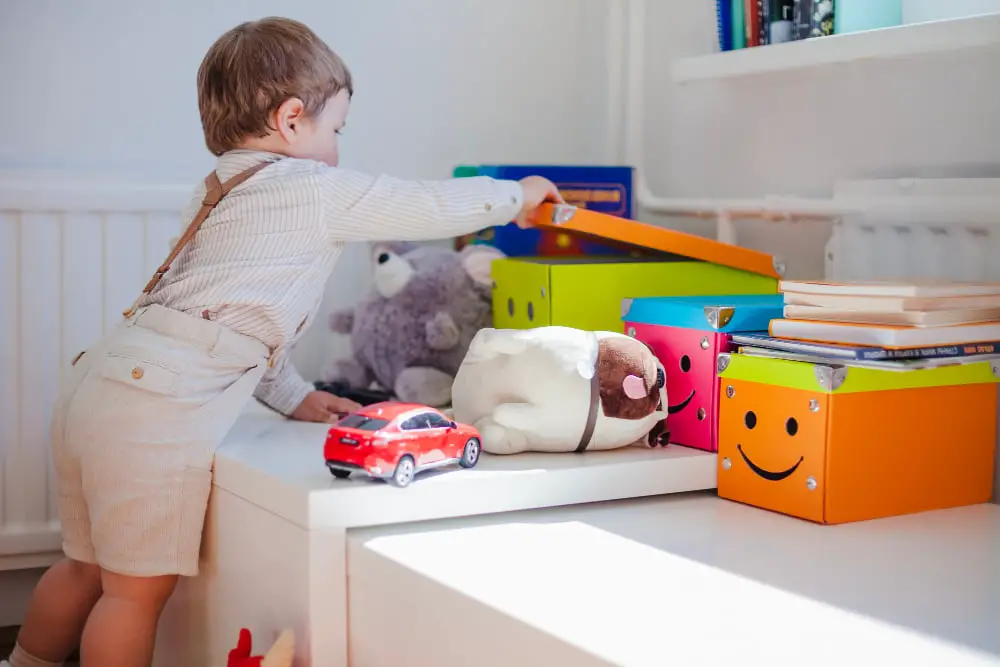
Engaging your children in the process can help them understand the importance of organization and the value of their belongings.
Depending on the child’s age, different levels of participation can be expected.
For younger children, make it a game. For example, who can sort their toys fastest?
Older ones can be given more responsibility, such as dividing toys into categories like ‘keep‘, ‘donate‘, or ‘throw away‘.
Always ensure you discuss the reason behind each decision.
This not only teaches them organizing skills but also empathy, as they learn that not every child is as fortunate as they are.
Setting Up Decluttering Rules
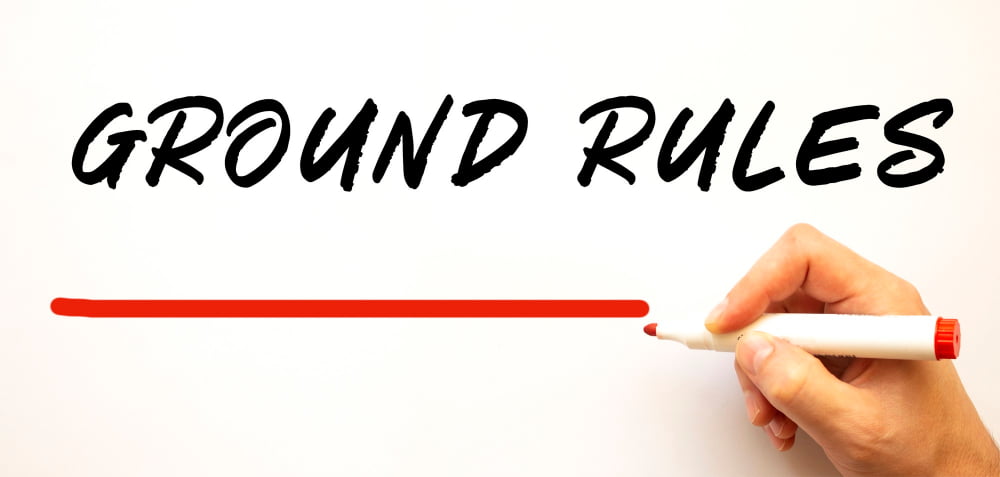
Establishing rules makes the decluttering task more manageable and efficient. It provides clear guidelines on what stays and what has to go. One such rule could be the “one-in, one-out” policy where for every new toy entering the house, an old one has to be donated or discarded.
This not only keeps the toy collection in check, but also instills in kids the habit of sharing and letting go. Another rule could be related to the physical space. Once a storage bin or shelf is full, no more toys are added until there’s room. Seasonal and holiday-specific toys can also be regulated, stored away when not in use.
Do remember, the rules must be reasonable and flexible, acknowledging both your child’s feelings and the need for an organized space. For rules to be effective, ensure they’re understood and agreed upon by the entire family. Consistency is key; following these rules will eventually make them part of your household’s routine.
Creating a Play-Rotate-Donate System
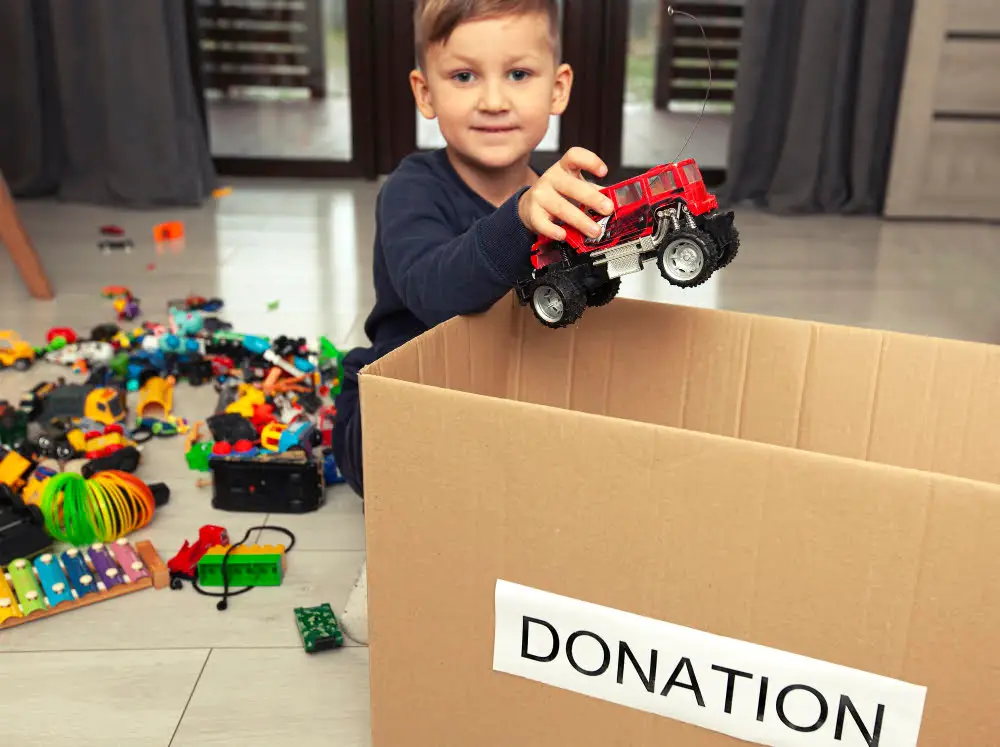
Developing this system involves dividing toys into three distinct sets. One set encompasses toys for immediate play, the second box holds toys to rotate into play every few weeks, and the third collection consists of toys to donate.
This method refreshes the appeal of ‘old‘ toys and reduces overall clutter without causing emotional strain over ‘lost‘ toys.
After a rotation phase, if a toy still fails to engage your child, consider it for donation.
Also, make donating a regular activity, helping children learn about sharing and contributing to broader society.
Establishing a Toy Rotation System
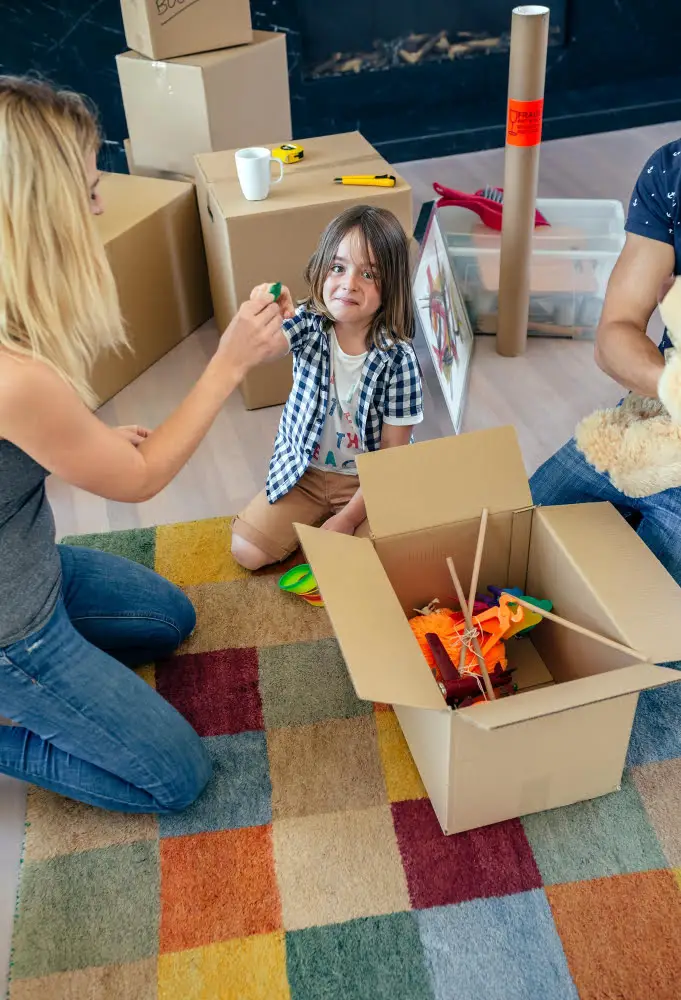
Establishing a toy rotation system is an excellent strategy that keeps children engaged while reducing visible clutter. To start, divide the toys into several groups. Ensure there is a variety of types in each group, ranging from educational to just-for-fun toys.
Next, choose one group to be in rotation, storing the rest temporarily out of sight. After a set period, usually two weeks to a month, collect the current toys and replace them with another group. The key here is to observe your child’s play pattern and adjust the rotation accordingly. This system promotes a richer play experience as kids find ‘new’ toys consistently, aiding their focus and interest while keeping clutter to a minimum.
Remember, this system requires discipline and consistency for it to be effective. Plan the rotation in advance and stick to the schedule. Over time, this change will become routine and an efficient part of your family’s decluttering strategies.
Practical Toy Storage Ideas
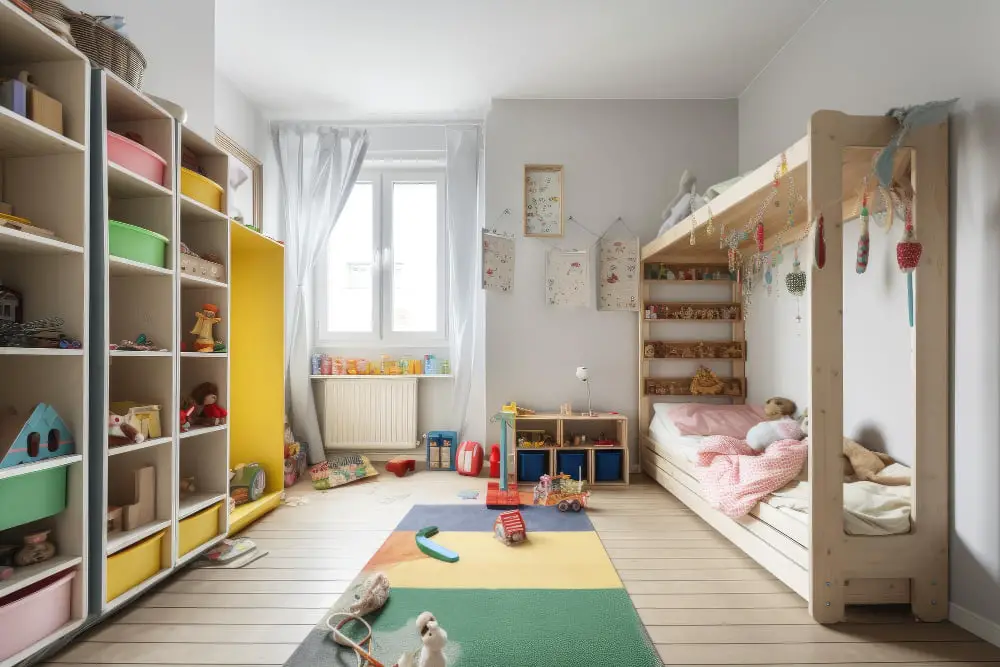
Implementing smart storage solutions can greatly assist in maintaining an organized and clutter-free space. Opt for clear plastic bins, which allow for a quick visual to understand the contents without needing to rummage through. Try to categorize toys within these bins based on type, enhancing accessibility.
For smaller items like Lego pieces, art supplies or doll accessories, consider a tower of drawers. It’s a great way to neatly separate these components while preserving space.
Don’t forget about toy storage furniture, such as shelves or cubbies with individual compartments, providing easy-to-reach, specific places for different kinds of toys. Investing in furniture that doubles as storage, like ottomans or benches with hidden compartments, can deliver additional collection room without consuming extra space.
Consider using wall space too, especially for hanging toys or art. Wall-mounted baskets or nets are perfect for lightweight plush toys or sports equipment. Always remember to put lighter, less often used toys on higher shelves while keeping heavier, frequently used items at kids’ eye level.
On another note, label your storage spaces to make cleanups easier, faster and more fun. This will also aid in teaching children where their toys belong.
Managing Gifts and New Toy Purchases

Balancing incoming toys is essential in maintaining a clutter-free area.
Establish an “in-out” rule: for every new toy that comes in, an old one gets donated or set aside for rotation.
This rule helps keep the toy population under control while teaching kids the value of giving.
During birthdays or holidays when gift influx is high, consider requesting non-toy gifts such as experiences or educational resources from family and friends.
If toys are inevitable, opt for those that are durable, multi-use, or promote creativity, steering clear from one-time use or gimmicky toys with limited play value.
Regularly review and incorporate the new toys into the rotation system to keep clutter at bay.
Set Clear Limits On Toy Acquisition
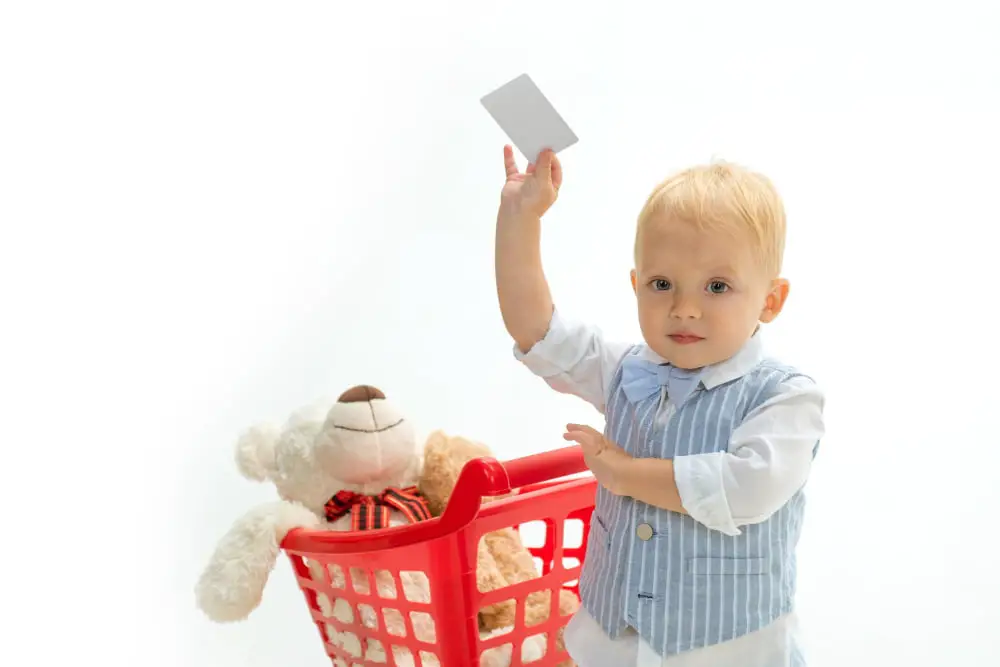
Maintaining a balanced toy inventory is crucial. One effective strategy is to implement the ‘one in-one out’ rule.
This means that whenever a new toy is brought home, an existing one must depart. In addition to curbing the growth of the toy collection, it teaches children about decision-making, priority setting, and the value of giving.
As an extension to this, consider setting a physical limit, such as a specific toy box or shelf that shouldn’t overflow. By letting children choose which toys stay within these boundaries, they will learn about spatial awareness, organization skills and keeping their environment tidy.
Maintenance and Regular Cleanup
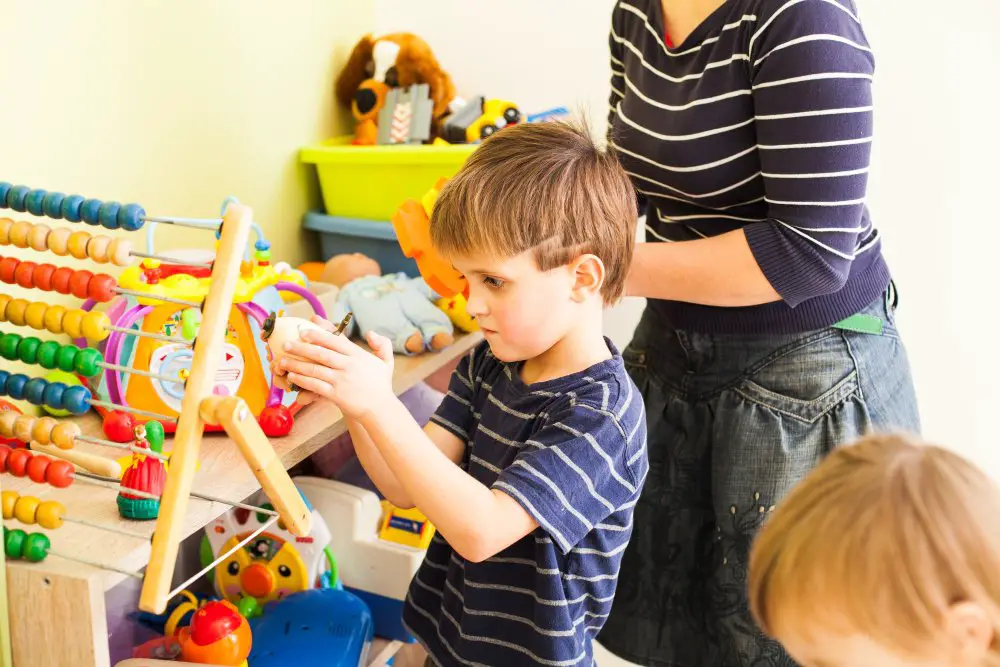
To ensure the decluttered state of play area is maintained, routine checks and cleanups are crucial.
Consistent follow-ups on your established rules for organizing toys prevent re-accumulation of clutter.
Set a specific time each week to sweep through the play area.
Any toys not in their assigned places should be returned accordingly.
Include the children in this process and instill the principles of responsibility and cleanliness.
Regular cleanup not only maintains the tidiness of the play area but also encourages the practice of good habits.
Remember, the aim is to ensure the decluttering effort is made worthwhile and sustainable over the long run.
Making Decluttering a Fun Activity
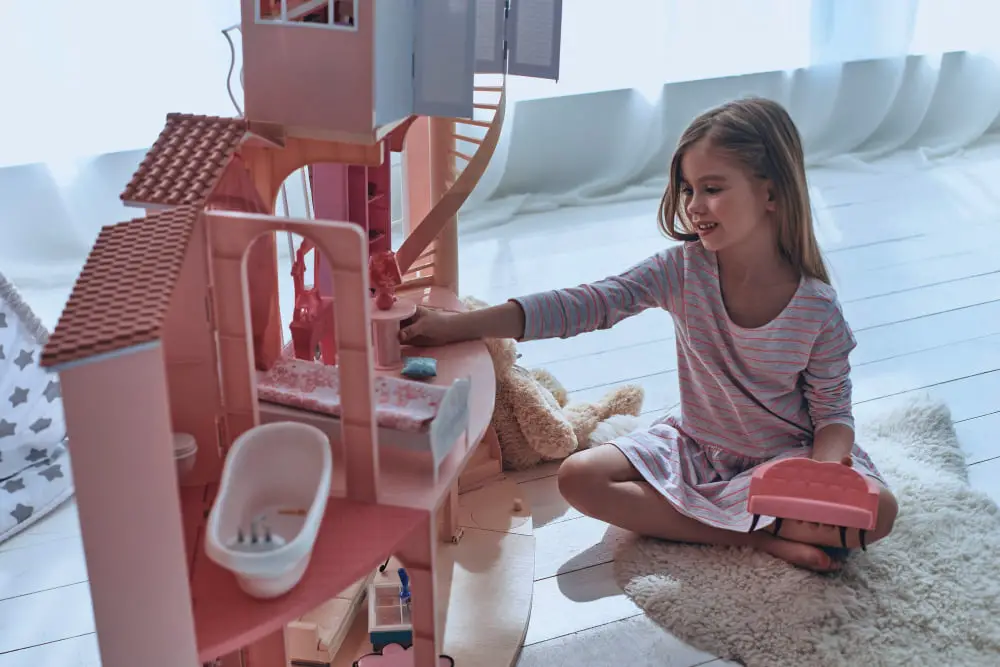
Transform toy decluttering into an enjoyable game. Compete with your children to see who can sort their toys the fastest.
Alternatively, make it an event with music and dance breaks. Another fun approach is to create a scavenger hunt for specific toys to be put away.
Ensuring fun remains at the core of decluttering can encourage kids to participate actively, fostering a habit of keeping their spaces clean and organized.
Moreover, incorporating joy into this routine task underscores that tidiness and fun aren’t mutually exclusive.
Benefits of a Decluttered Play Area
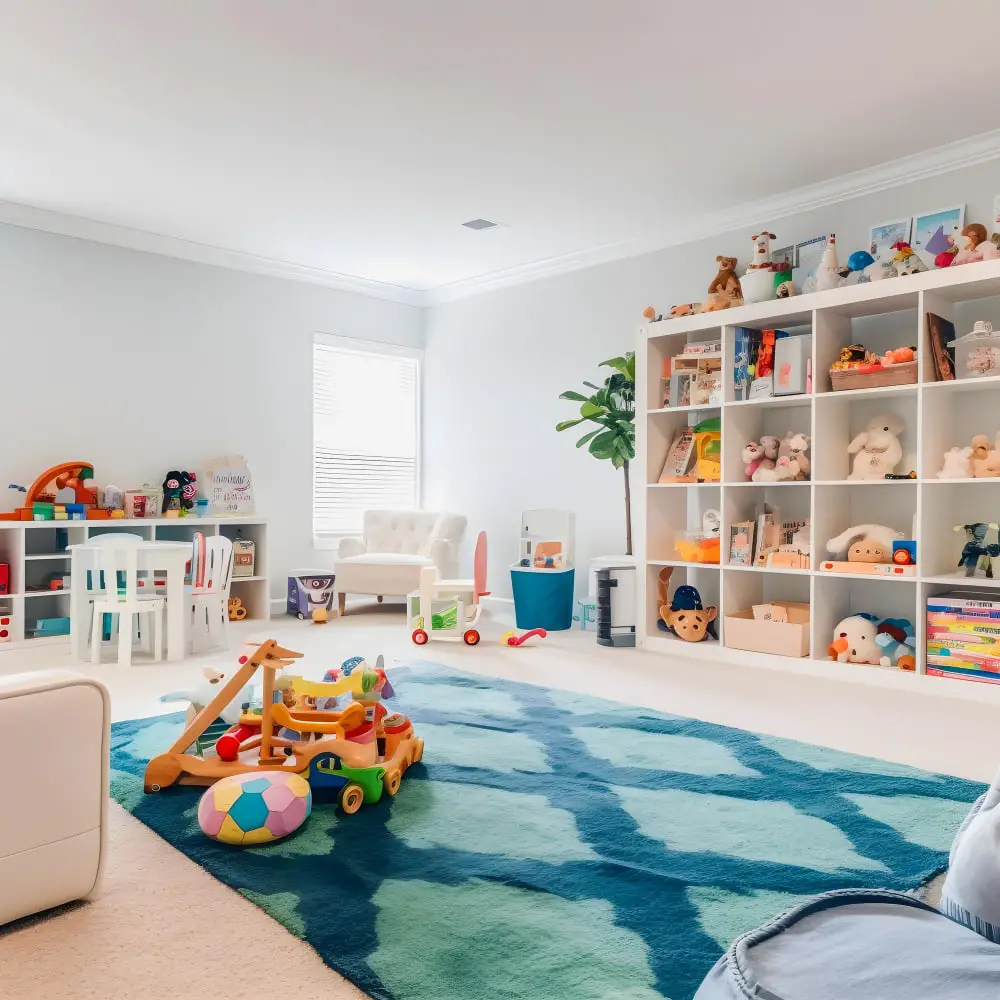
A decluttered play area promotes healthy development in children. It fosters better focus by reducing distractions, encouraging deeper, more creative play.
It also makes it easier for children to find and care for their favorite toys, teaching them responsibility and respect for their belongings.
Furthermore, less clutter means less cleaning and tidying, freeing up more quality time to spend together as a family. Plus, with fewer toys in circulation, each one gets played with more often, offering a better return on investment.
Lastly, it cultivates an appreciation for simplicity and can help establish a lifelong habit of careful consumption and organization.
FAQ
What is the 20 toy rule?
The 20 toy rule is a decluttering strategy where children choose 20 of their favorite toys to keep, with the remainder being stored away to maintain an organized and clutter-free environment.
How can the art of toy rotation facilitate decluttering?
The art of toy rotation facilitates decluttering by reducing visual clutter, increasing children’s focus on existing toys, and storage optimization due to a smaller active toy inventory.
What are some creative storage solutions for organizing children’s toys?
Creative storage solutions for organizing children’s toys can involve using labeled bins, over-the-door shoe organizers, hanging mesh nets, clear shoeboxes, pegboards, and repurposed furniture like bookshelves and old kitchen cabinets.
How can parents facilitate their children’s involvement in the decluttering process?
Parents can facilitate their children’s involvement in the decluttering process by making it a game or contest, tying it to rewards, and/or assigning age-appropriate tasks.




